Data Science Interview Questions And Answers
4.9 out of 5 based on 13245 votesLast updated on 7th Jul 2023 7.54K Views
- Bookmark

This Blog contains the top Data Science Interview Questions and answers in 2025. which helps you to crack Data Science Interview.
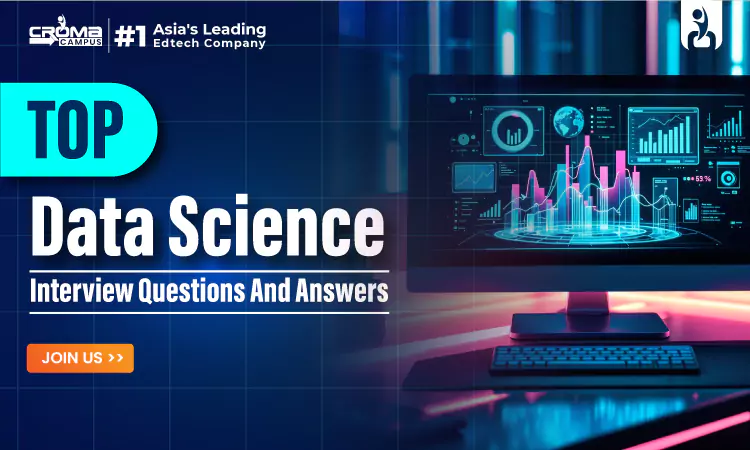
In today's rapidly evolving tech world, the field of data science has emerged as a dynamic and exciting domain. With its ability to uncover valuable insights from vast amounts of data, Data Science Course has gained tremendous importance across industries. However, for professionals looking to embark on a career in data science, navigating the job market and preparing for interviews can indeed be a daunting task.
The key to success in the field of data science lies in acquiring a diverse range of skills and knowledge. While this may initially appear overwhelming, it also presents a tremendous opportunity for professional growth. Data science encompasses various disciplines such as statistics, programming, machine learning, and domain expertise. By embracing this multidisciplinary nature, professionals can equip themselves with a comprehensive skill set that will set them apart in the jobmarket.
When it comes to interview preparation, it is essential to focus on both technical and non-technical aspects. Technical skills, such as proficiency in programming languages like Python or R, knowledge of data manipulation and analysis techniques, and familiarity with machine learning algorithms, are highly sought after. However, it's equally important to showcase your ability to think critically, communicate effectively, and demonstrate a strong understanding of the underlying principles behind data science methodologies.
While the path to a career in Data Science Certification Course might seem a bit challenging, it is also filled with immense potential. Embracing the ever-expanding opportunities in this field and adopting a proactive and continuous learning mind-set will not only make the journey more manageable but also open doors to exciting career prospects.
So, here is a list of Data Science Interview Questions and Answers that will help you in providing you with the gist of the types of questions being asked in the interview sessions.
Note: Data Science and Data Analytics empower businesses with insights from data. Explore Data Analytics Courses Noida to master skills for predictive modeling, visualization, and decision-making.
Q1. What is Data Science?
Ans: Data science is an interdisciplinary field that combines various techniques, tools, and algorithms to extract insights and knowledge from structured and unstructured data.
Q2. What are the different stages of a data science project?
Ans: The stages of a data science project typically include problem definition, data collection, data cleaning and pre-processing, exploratory data analysis, model building, model evaluation, and deployment.
Q3. What is the difference between supervised and unsupervised learning?
Ans: In supervised learning, the model is trained on labelled data, where the target variable is known. In unsupervised learning, the model is trained on unlabeled data, and it discovers patterns and relationships on its own.
Q4. What is cross-validation?
Ans: Cross-validation is a technique used to evaluate the performance of a model by partitioning the available data into subsets. The model is trained on some subsets and tested on the remaining subset, repeating the process multiple times to get a more reliable estimate of its performance.
Q5. What is regularization in machine learning?
Ans: Regularization is a technique used to prevent over fitting in machine learning models. It adds a penalty term to the loss function, discouraging complex models and promoting simplicity.
Note: A Data Engineer designs, builds, and manages data pipelines for analytics and AI. Enrolling in a Data Engineer Course With Placement ensures hands-on experience and career opportunities in this high-demand field.
Q6. Explain the bias-variance trade-off.
Ans: The bias-variance trade-off refers to the balance between the error introduced by bias (underfitting) and the error introduced by variance (over fitting) in machine learning models. Increasing model complexity reduces bias but increases variance, and vice versa.
Q7. What is feature selection?
Ans: Feature selection is the process of selecting a subset of relevant features from a larger set of features to improve model performance and reduce computational complexity.
Q8. What is the curse of dimensionality?
Ans: The curse of dimensionality refers to the challenges and issues that arise when working with high-dimensional data. As the number of features increases, the data becomes sparser, and distance-based algorithms can suffer from increased computational requirements and decreased performance.
Q9 What is the difference between precision and recall?
Ans: Precision is the ratio of true positives to the sum of true positives and false positives. Recall is the ratio of true positives to the sum of true positives and false negatives. Precision measures the accuracy of positive predictions, while recall measures the ability of the model to find all positive instances.
Q10. What is the ROC curve?
Ans: The ROC (Receiver Operating Characteristic) curve is a graphical representation of the performance of a classification model. It plots the true positive rate (TPR) against the false positive rate (FPR) at various classification thresholds.
Tips: Unlock the potential of Artificial Intelligence with our comprehensive Artificial Intelligence Online Training, designed to equip you with cutting-edge skills for future-ready careers.
Q11. What is the purpose of A/B testing?
Ans: A/B testing is a statistical hypothesis testing technique used to compare two or more versions of a product or webpage to determine which one performs better. It is commonly used in marketing and product development to make data-driven decisions.
Q12. How do you handle missing data in a dataset?
Ans: Missing data can be handled by techniques such as imputation (replacing missing values with estimated values), deletion (removing rows or columns with missing values), or using algorithms that can handle missing values directly.
Q13. What is the Central Limit Theorem?
Ans: The Central Limit Theorem states that the distribution of the sample means approaches a normal distribution as the sample size increases, regardless of the shape of the original population distribution. It is a fundamental concept in statistics.
Q14. What is the curse of dimensionality?
Ans: The curse of dimensionality refers to the phenomenon where the performance of certain algorithms deteriorates as the number of features or dimensions increases. As the feature space becomes larger, data becomes sparse, and algorithms struggle to find meaningful patterns or relationships.
Q15. What is regularization, and why is it important?
Ans: Regularization is a technique used to prevent over fitting in machine learning models. It introduces a penalty term to the loss function, which discourages excessive complexity in the model. Regularization helps to control the trade-off between fitting the training data well and generalizing it to new, unseen data.
Q16. What is cross-validation, and why is it used?
Ans: Cross-validation is a technique used to assess the performance of a machine-learning model. It involves partitioning the available data into multiple subsets or "folds." The model is trained on some folds and evaluated on the remaining fold(s). This process is repeated multiple times, and the performance metrics are averaged. Cross-validation provides a more robust estimate of a model's performance than a single train-test split.
Q17. What is the ROC curve, and how is it useful?
Ans: The Receiver Operating Characteristic (ROC) curve is a graphical representation of the performance of a binary classification model. It plots the true positive rate (sensitivity) against the false positive rate (1 - specificity) at various classification thresholds. The ROC curve helps to assess the trade-off between the true positive and false positive rates and allows us to choose an appropriate threshold based on the specific needs of the problem.
Q18. Explain the concept of gradient descent.
Ans: Gradient descent is an optimization algorithm used to minimize the loss function in machine learning models. It works by iteratively adjusting the model's parameters in the direction of the steepest descent of the loss function. The adjustments are proportional to the negative gradient of the loss with respect to the parameters. This process continues until the algorithm converts
Q19. Describe the steps involved in the K-means clustering algorithm.
Ans: The steps in the K-means clustering algorithm are as follows:
- Randomly initialize K cluster centroids.
- Assign each data point to the nearest centroid based on distance (e.g., Euclidean distance).
- Recalculate the centroid of each cluster based on the assigned data points.
- Repeat steps 2 and 3 until convergence (when the centroids no longer change significantly) or a maximum number of iterations is reached.
Q 20. What is the difference between bagging and boosting?
Ans: Bagging and boosting are both ensemble methods that improve model performance. Bagging works by training multiple models independently on different data subsets and combining their results, while boosting builds models sequentially, where each new model corrects the errors made by the previous ones. In Data Science Interview Questions, you may be asked to compare these techniques to understand how they work differently and which situation suits each method best.
Note: Croma Campus is one of the leading EdTech companies for providing Data Analytics Online Training. You can check the details about the course, fees and duration.
Q 21. What is the purpose of data cleaning?
Ans: Data cleaning is the process of identifying and fixing errors in your dataset, such as missing values, duplicates, or inconsistencies. It is a critical first step in any data science project. In Data Science Interview Questions and Answers for Freshers, you may be asked how you handle and clean raw data before analyzing it, as it directly impacts the quality of your results.
Q 22. What are outliers, and how do you handle them?
Ans: Outliers are data points that are significantly different from other values in the dataset. They can skew your analysis, leading to inaccurate results. To handle outliers, you might remove them or adjust them based on their impact on the analysis. If you are preparing for Data Science Interview Questions for Freshers, expect to explain your approach to identifying and dealing with outliers in your datasets.
Q 23. What is the difference between classification and regression?
Ans: Classification and regression are two types of machine learning problems. Classification is used when the output is a category or class, like spam vs. not spam. Regression is used when the output is a continuous value, like predicting house prices. When preparing for Data Science Interview Questions, it’s essential to understand the differences between these two approaches.
Q 24. What are hyperparameters in machine learning?
Ans: Hyperparameters are parameters that control how a machine learning model is trained, such as the learning rate, the number of hidden layers, or the tree depth. These are different from model parameters, which are learned during the training process. In Data Science Interview Questions, understanding hyperparameters and how they affect the model is crucial.
Q 25. What is a decision tree?
Ans: A decision tree is a simple yet powerful model that breaks down a decision into a set of rules. It splits data at each node based on the most important feature, and the process continues until a decision is made. In a Data Science Course in Noida, you'll likely learn how decision trees work and how to use them in real-world problems.
Q 26. What is a random forest?
Ans: Random Forest is an ensemble method that uses many decision trees to make predictions. Each tree is trained on different parts of the data, and their results are averaged for more accurate predictions. When preparing for Data Science Interview Questions and Answers, it's important to understand how random forest improves upon a single decision tree.
Q 27. What is the support vector machine (SVM)?
Ans: Support vector machine (SVM) is a machine learning model used for classification tasks. It works by finding the hyperplane that best separates data into different classes. For Data Science Online Classes, SVM is a common topic, and you’ll need to understand how it finds the best dividing line and when it’s useful.
Q 28. What is a neural network?
Ans: A neural network is a computational model inspired by the way the human brain works. It consists of layers of nodes (or neurons) that process and pass data through the network. For Data Science Interview Questions, be prepared to explain how neural networks work and their role in deep learning applications.
Q 29. What is deep learning?
Ans: Deep learning is a subset of machine learning that uses neural networks with many layers to analyze large amounts of data. It’s great for complex tasks like image and speech recognition. If you take a Data Science Course in Delhi, deep learning will be a key part of your training.
Q 30. What is a convolutional neural network (CNN)?
Ans: CNNs are a type of neural network particularly good at processing visual data, such as images and videos. They use convolutional layers to automatically detect patterns. Expect Data Science Interview Questions for Freshers to include questions about CNNs, as they are essential for image-related machine learning tasks.
Q 31. What is a recurrent neural network (RNN)?
Ans: RNNs are designed to handle sequential data, like time-series data or sentences in text. They process information in order, using previous outputs as part of the current calculation. In Data Science Interview Questions, you might be asked to explain how RNNs are useful for text and speech recognition.
Q 32. What is a K-means algorithm?
Ans: K-means is a clustering algorithm that groups data into K clusters based on similarity. It’s an unsupervised learning technique used when you don’t have labeled data. When preparing for Data Science coding Interview Questions, understanding how K-means works and its applications is essential.
Q 33. What is PCA (Principal Component Analysis)?
Ans: PCA is a dimensionality reduction technique used to reduce the number of variables in a dataset while retaining as much information as possible. It’s useful for simplifying complex data, and you'll often study this in a Data Science Course in Gurgaon to handle high-dimensional datasets.
Q 34. What is the difference between a parametric and non-parametric model?
Ans: Parametric models assume that data follows a certain distribution, while non-parametric models do not. For example, linear regression is parametric, while K-nearest neighbors is non-parametric. In Data Science Interview Questions for Freshers, understanding when to use each type of model is essential for solving real-world problems.
Q 35. What is a loss function in machine learning?
Ans: A loss function is a way to measure how well a machine learning model is performing. It calculates the difference between predicted and actual values, helping the model improve its predictions over time. In Data Science Interview Questions and Answers, be prepared to explain the importance of loss functions.
Q 36. What is the purpose of cross-validation?
Ans: Cross-validation is a technique to test the model’s performance on different subsets of the data. It helps prevent overfitting and ensures the model generalizes well to new, unseen data. When preparing for Data Science technical Interview Questions, make sure you understand how cross-validation works and when to use it.
Q 37. What are the types of machine learning algorithms?
Ans: The main types of machine learning algorithms are supervised learning, unsupervised learning, and reinforcement learning. In supervised learning, the model learns from labeled data, while unsupervised learning finds patterns in unlabeled data. Reinforcement learning involves learning from feedback. Data Science Online Classes often explain these types in detail.
Q 38. What is the difference between batch and online learning?
Ans: Batch learning involves training a model using the entire dataset at once, while online learning updates the model incrementally as new data arrives. Data Science Interview Questions may ask you which method is better for certain tasks, like streaming data or large datasets.
Q 39. What is ensemble learning?
Ans: Ensemble learning involves combining multiple models to improve overall performance. It helps reduce the risk of overfitting and improves accuracy. In Data Science Interview Questions, you may be asked how ensemble learning methods, like bagging and boosting, can enhance model performance.
Q 40. How do you handle imbalanced datasets?
Ans: Imbalanced datasets occur when one class is significantly underrepresented. Techniques like oversampling the minority class, undersampling the majority class, or using specialized algorithms can help. In Data Science Coding Interview Questions, you may be asked how you would address class imbalance in your model.
Q 41. What is a confusion matrix?
Ans: A confusion matrix is a table used to evaluate the performance of classification models. It shows the number of correct and incorrect predictions, broken down by class. Data Science Interview Questions will likely test your understanding of how to read and use a confusion matrix to measure model accuracy.
Q 42. What are precision and recall?
Ans: Precision measures how many positive predictions were actually correct, while recall measures how many actual positives were correctly identified by the model. In Data Science Interview Questions and Answers, you may be asked to explain the trade-off between precision and recall in your models.
Q 43. What is a hyperparameter?
Ans: A hyperparameter is a setting that controls how a machine learning model is trained, like the learning rate or the number of trees in a forest. In Data Science Interview Questions for Freshers, you might be asked about the role of hyperparameters and how to tune them for optimal performance.
Q 44. What is the importance of feature engineering?
Ans: Feature engineering involves transforming raw data into useful features that improve the performance of a machine learning model. It’s a crucial skill you'll learn in Data Science Online Classes as it directly affects how well the model can make predictions based on the data.
Q 45. How does a random forest algorithm work?
Ans: Random forest is an ensemble learning technique that creates multiple decision trees to improve prediction accuracy. It works by averaging the results of many decision trees trained on random subsets of the data. Data Science Interview Questions often cover random forests to test your understanding of ensemble methods.
Q 46. What is deep learning?
Ans: Deep learning is a type of machine learning that uses large neural networks to handle complex data like images, text, or speech. It is a core topic in Data Science Courses that prepares you for working with advanced techniques and powerful models in fields like computer vision and natural language processing.
Q 47. What is the bias-variance trade-off?
Ans: The bias-variance trade-off refers to the balance between underfitting and overfitting. High bias means the model is too simple and doesn’t capture enough details, while high variance means it’s too complex and overfits the training data. You’ll learn to balance this trade-off during Data Science Interview Questions for Freshers preparation.
Q 48. What are the differences between bagging and boosting?
Ans: Bagging and boosting are both techniques that combine multiple models to improve performance. Bagging trains models independently on random data subsets, while boosting builds models sequentially, with each new model correcting errors made by the previous one. These techniques are often discussed in Data Science Interview Questions.
Q 49. What is a decision tree and how does it work?
Ans: A decision tree is a machine learning algorithm that makes decisions by splitting data based on the most significant features. It is simple to understand and interpret, making it an excellent starting point for new learners.
Q 50. How does support vector machine (SVM) work?
Ans: SVM is a classification algorithm that tries to find the hyperplane that best separates data into classes. It’s particularly useful when there’s a clear margin of separation between classes. You’ll explore SVM in Data Science Online Classes to understand its application in classification problems.
Benefits of Acquiring Data Science Course from Croma Campus
As per its increasing demand, acquiring data science skills can offer several benefits:
• High demand: Data science is a rapidly growing field with a high demand for skilled professionals. By acquiring data science skills, you increase your chances of finding lucrative job opportunities in various industries.
• Versatile applications: Data science techniques and tools can be applied across different domains, such as finance, healthcare, marketing, and e-commerce. This versatility allows you to explore diverse career paths and work on exciting projects.
• Competitive advantage: With data science skills, you gain a competitive edge in the job market. Employers value individuals who can extract meaningful insights from data and make data-driven decisions to improve business outcomes.
• Lucrative salaries: Data scientists often receive attractive remuneration packages due to the scarcity of skilled professionals in the field. It can provide you with the opportunity to earn a higher salary and enjoy financial stability.
• Problem-solving capabilities: Data science equips you with the ability to tackle complex problems and derive actionable insights from large and diverse datasets. These skills can be valuable in decision-making processes and in addressing real-world challenges.
• Continuous learning: Data science is an evolving field with constant advancements in technology and methodologies. Acquiring data science skills from a reputable institution can provide a strong foundation and open doors for continuous learning and professional development.
Acquiring Data Science Course will eventually allow you to know in-depth details about this process. You will also get enough study material as per the latest industry trends. Not only this, post the completion of the course, you will also get placement assistance.
You May Also Read:
Artificial Intelligence and Machine Learning
Machine Learning and Deep Learning
Machine Learning Interview Questions
Python Programming for Beginners
Python Interview Questions and Answers
Job Opportunities in Data Science
To be precise, Data science offers a wide range of job opportunities across various industries. As businesses continue to rely on data-driven decision-making, the demand for skilled data scientists remains high. Here are some common job roles in data science:
• Data Scientist: Data scientists are responsible for analysing complex datasets, building predictive models, and extracting actionable insights from data. They use statistical techniques, machine learning algorithms, and programming skills to solve business problems.
• Data Analyst: Data analysts focus on collecting, cleaning, and organizing data. They perform exploratory data analysis, create reports and visualizations, and assist in making data-driven decisions. Data analysts often work closely with data scientists and other stakeholders.
• Machine Learning Engineer: Machine learning engineers develop and deploy machine learning models and algorithms. They work on tasks such as data preprocessing, model training, optimization, and integration of machine learning systems into production environments.
• Data Engineer: Data engineers design, build, and maintain the infrastructure required for data storage, processing, and retrieval. They develop data pipelines, ensure data quality and consistency, and work on big data technologies like Hadoop, Spark, and SQL databases.
• Business Intelligence (BI) Analyst: BI analysts gather and analyse data to provide insights into business performance. They develop dashboards, reports, and visualizations using tools like Tableau, Power BI, or Excel. BI analysts work closely with stakeholders to identify key performance indicators and help drive data-informed decisions.
• Data Architect: Data architects design and manage the overall data infrastructure of an organization. They define data models, establish data governance policies, and ensure data security and privacy. Data architects collaborate with data engineers, analysts, and scientists to ensure efficient data flow and storage.
• Data Consultant: Data consultants work as external experts, helping organizations solve specific data-related challenges. They provide guidance on data strategy, assist with data analysis projects, and offer recommendations on implementing data-driven solutions.
• Research Scientist: They focus on developing new algorithms, techniques, and models in the field of data science. They often work in academia or research institutions, pushing the boundaries of knowledge in areas like machine learning, natural language processing, or computer vision.
These are just a few examples, and the field of data science is continuously evolving, offering new roles and opportunities. Keep in mind that job titles and responsibilities may vary across organizations, so it's essential to review specific job descriptions to understand the requirements and expectations for each role.
Relevant Online Courses:
Full Stack Data Science Course
Python Course for Data Science
Advanced Python Programming Course
Machine Learning Online Classes
Future Scope of Data Science
The future scope of data science is incredibly promising, as it continues to revolutionize various industries and shape our increasingly data-driven world. With the exponential growth of digital information, the demand for skilled data scientists will only continue to rise. Data science holds immense potential in sectors such as healthcare, finance, marketing, transportation, and beyond, enabling businesses and organizations to extract valuable insights, make data-informed decisions, and drive innovation.
- Data science is a field that studies data and how to extract meaning from it, whereas machine learning is a field devoted to understanding and building methods that utilize data to improve performance or inform predictions.
- Data Science is one of a kind procedure that is helping to make the best use of data.
- It is so effective that it solves numerous problems in data handling.
- By implementing its methods and strategies, you will be able to make some effective business decisions that will profit your business.
- Over the past few years, there has been a huge demand for skilled Data Scientists in the IT domain. So, obtaining its training will help you enter this direction professionally.
As technology advances, we can expect the field of data science to evolve further, with advancements in machine learning, artificial intelligence, and automation leading to more sophisticated data analysis techniques. The future of Data Science Course lies in harnessing the power of big data, uncovering complex patterns, predicting trends, and solving complex problems, ultimately driving efficiency, improving decision-making processes, and creating new opportunities for growth and development.
Subscribe For Free Demo
Free Demo for Corporate & Online Trainings.
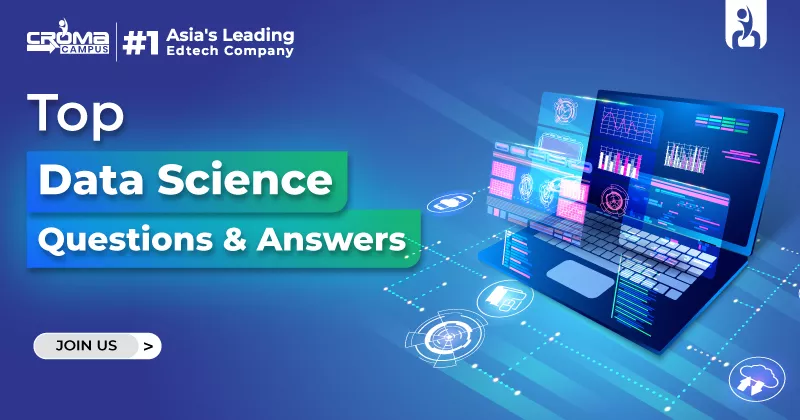

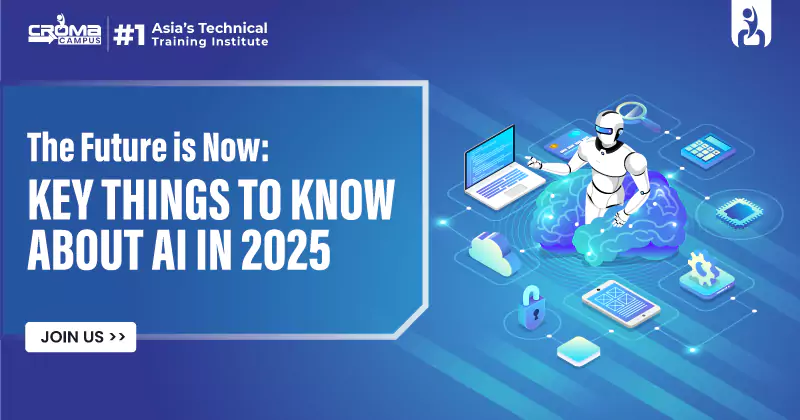
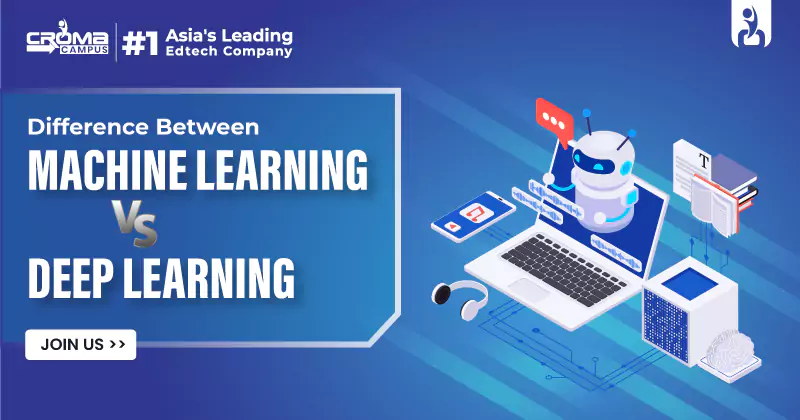
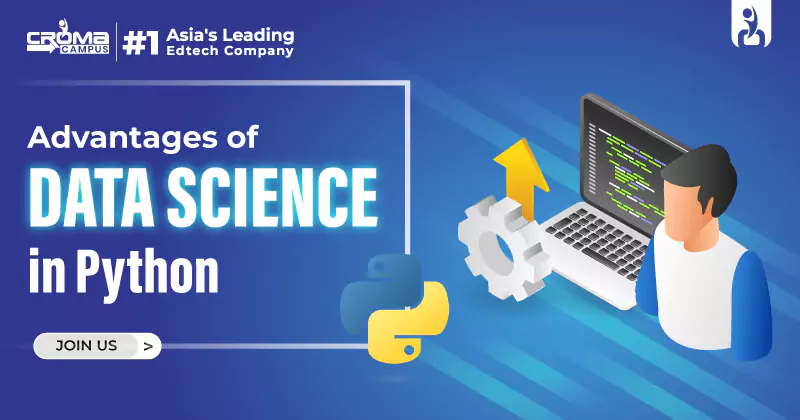
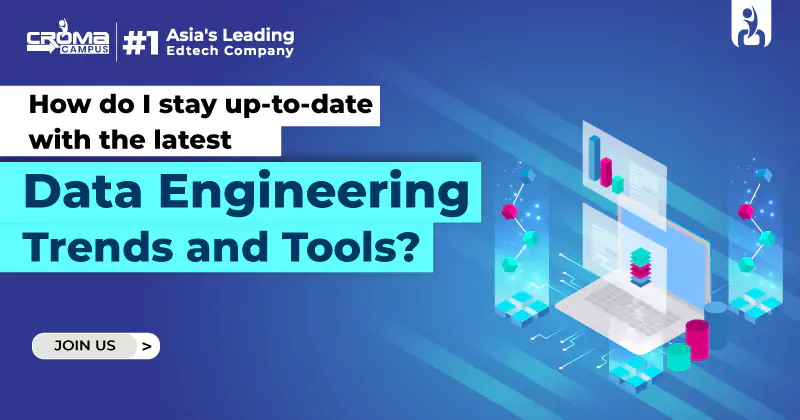
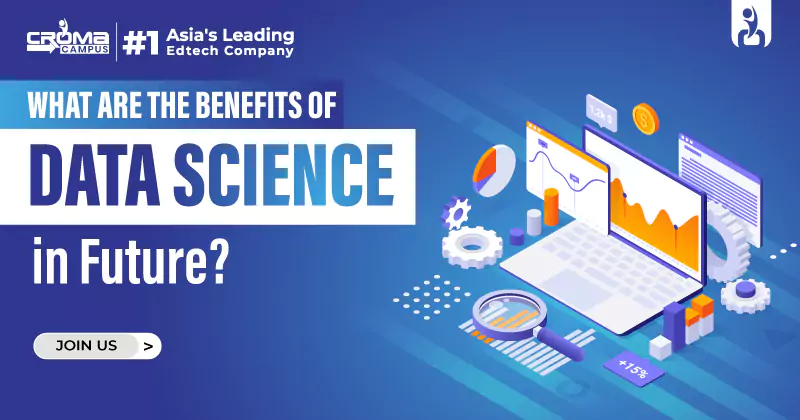
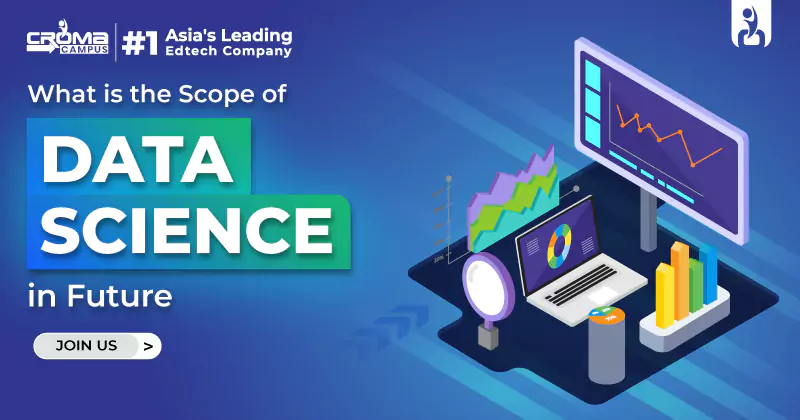
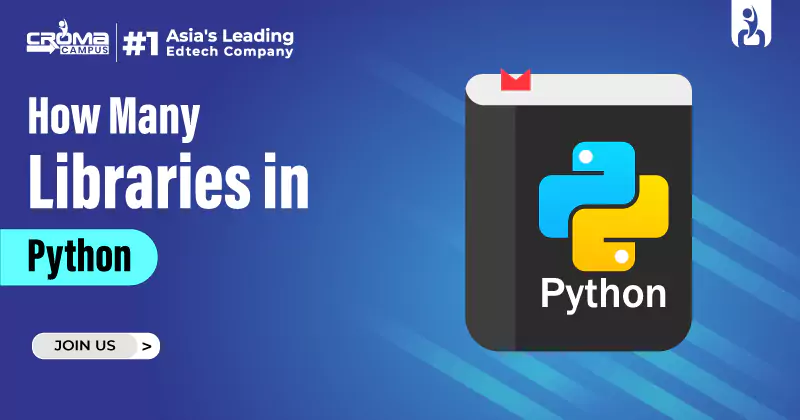
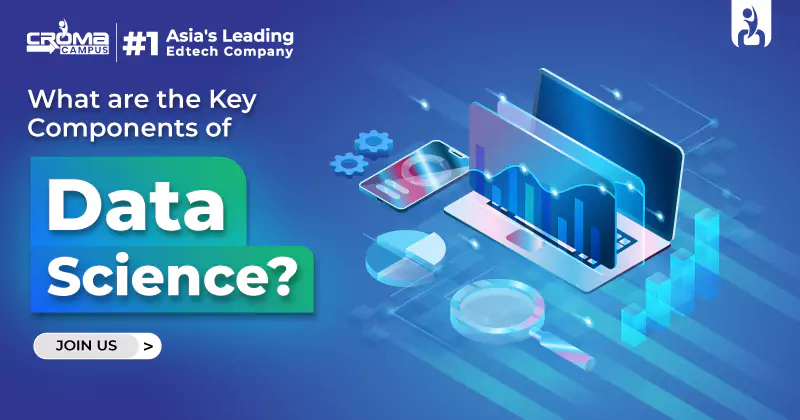
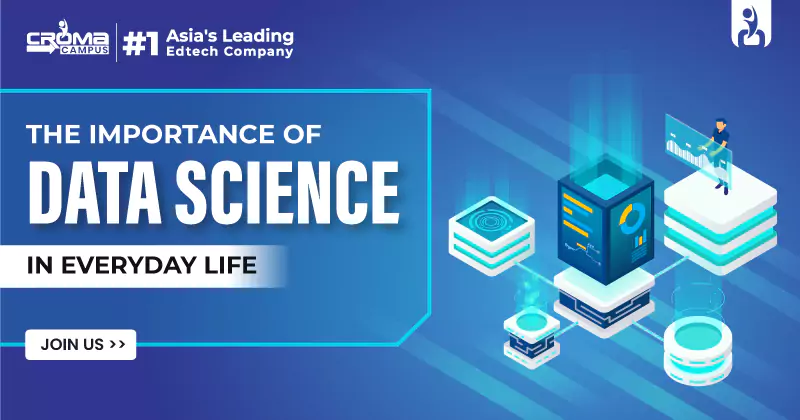














.webp)

.png)















